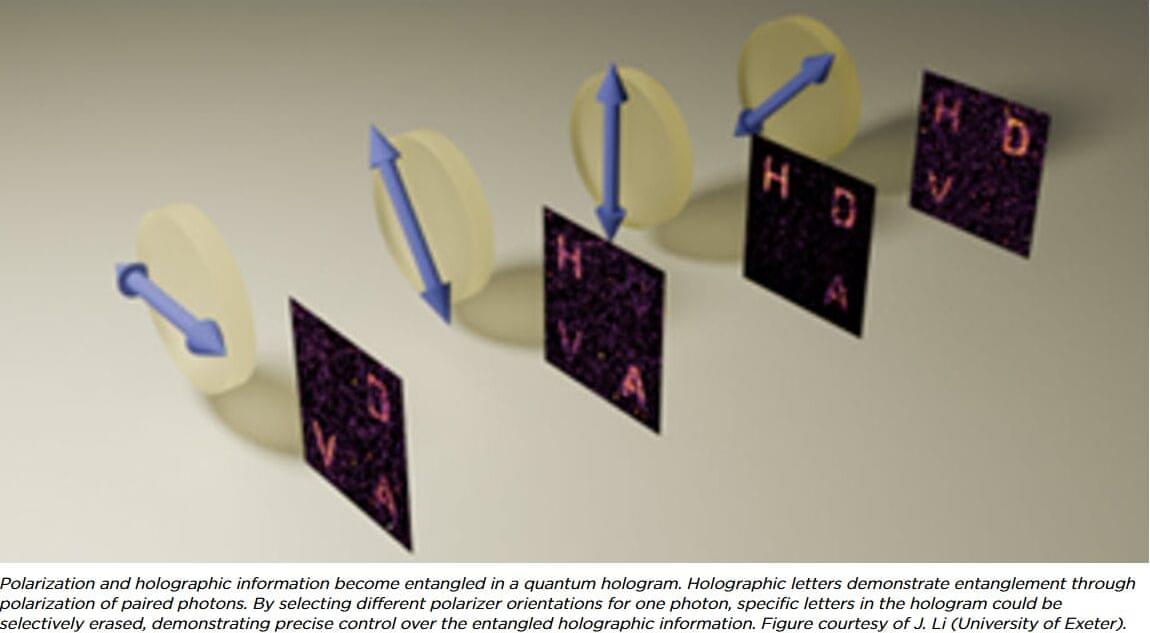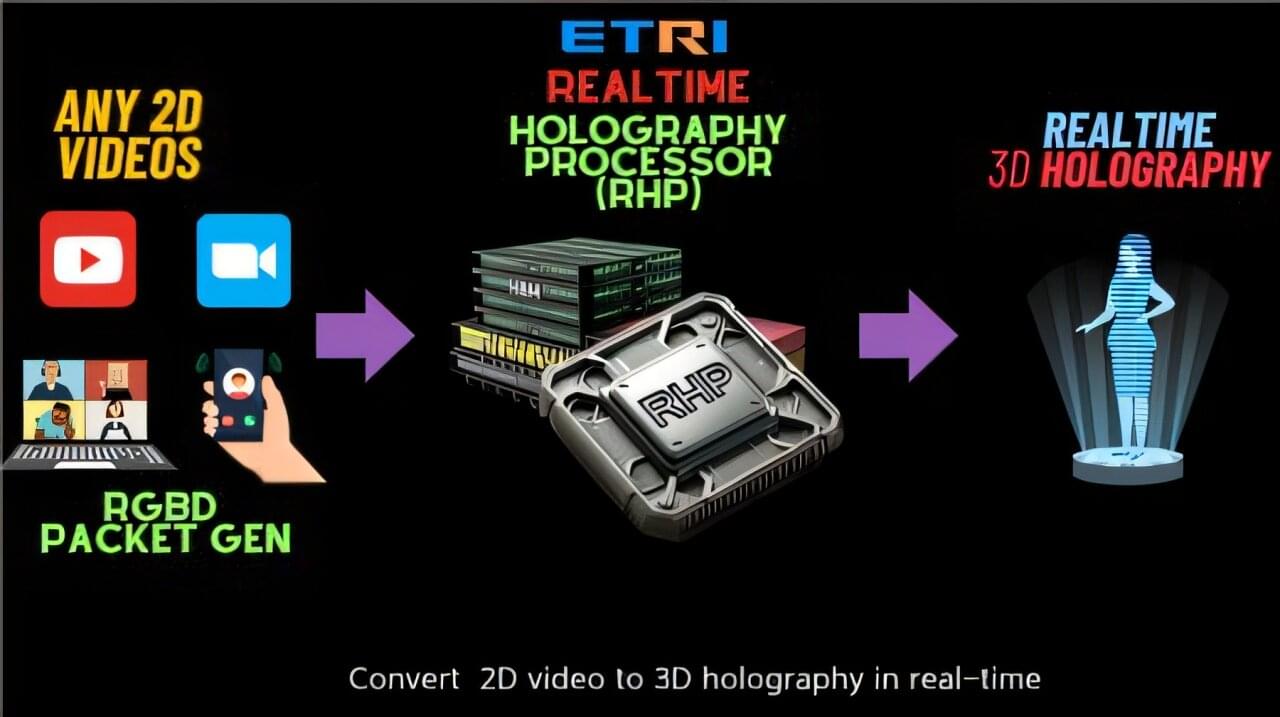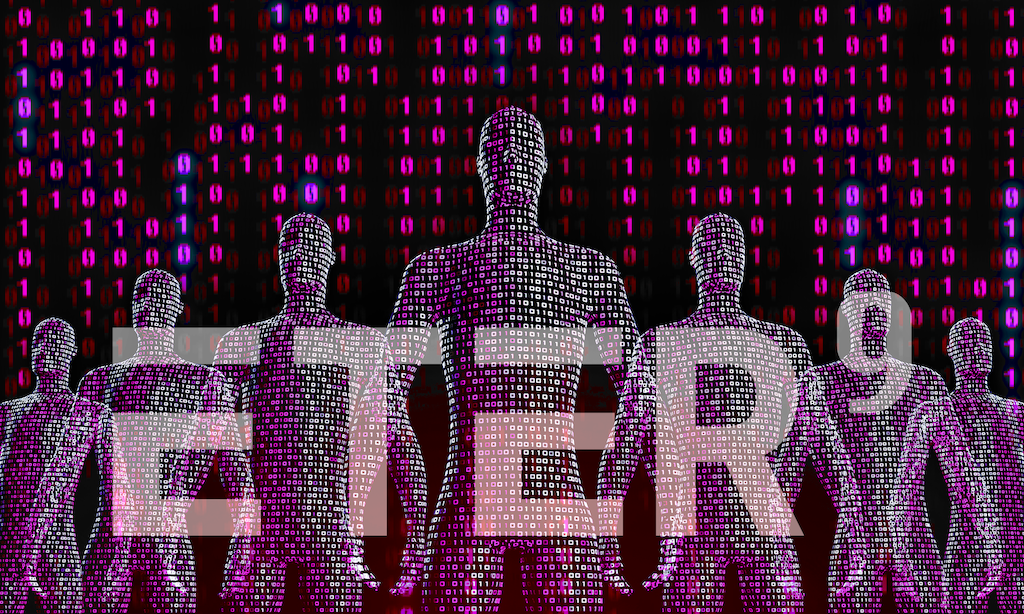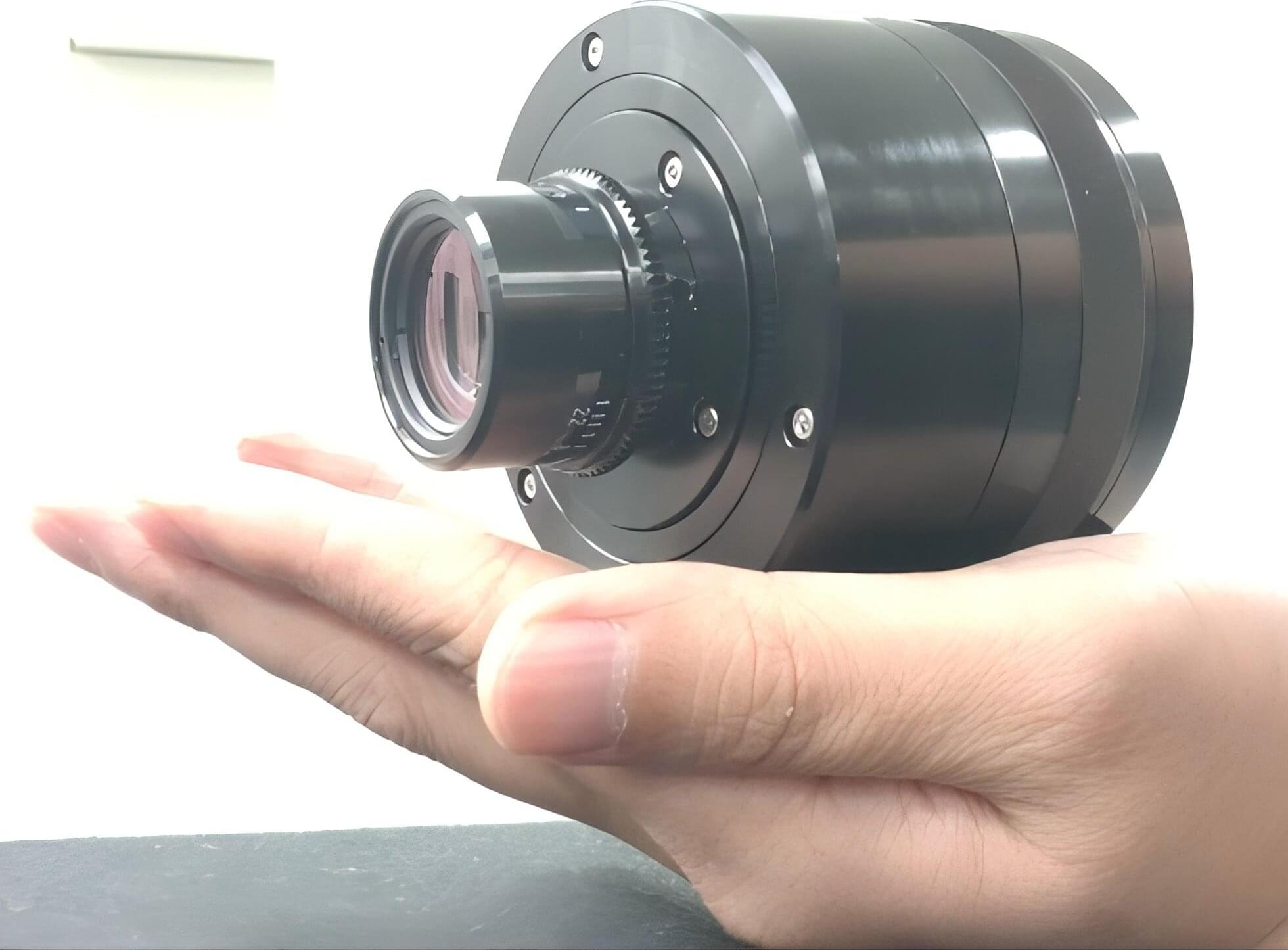Futuristic holograms you can manipulate have become a reality sooner than we thought, thanks to breakthrough display.
Category: holograms – Page 3
Scientists Built Holograms You Can Manipulate with Your Hands. This Is How the Future Feels
You’ve probably seen a movie in which a character pulls up a hologram display that they can poke, prod, and manipulate as easily as you could mess with a real object sitting on a desk in front of you.
The idea is so ubiquitous in science fiction that it’s become nearly synonymous with the word “hologram.” In almost every news story written about hologram technology and how far it has come, at some point, a disclaimer has to be made explaining that ‘it’s not quite Tony Stark tech, but it’s still cool!’
Holograms that can be grabbed and manipulated
Researchers have succeeded, for the first time, in displaying three-dimensional graphics in mid-air that can be manipulated with the hands. The team includes Doctor Elodie Bouzbib, from Public University of Navarra (UPNA), together with Iosune Sarasate, Unai Fernández, Manuel López-Amo, Iván Fernández, Iñigo Ezcurdia and Asier Marzo (the latter two, members of the Institute of Smart Cities).
“What we see in films and call holograms are typically volumetric displays,” says Bouzbib, the first author of the work. “These are graphics that appear in mid-air and can be viewed from various angles without the need for wearing virtual reality glasses. They are called true-3D graphics.
They are particularly interesting as they allow for the ‘come-and-interact’ paradigm, meaning that the users simply approach a device and start using it.


Korean researchers develop a processor for real-time hologram generation
Korean researchers have developed a digital holography processor that converts two-dimensional (2D) videos into real-time three-dimensional (3D) holograms. This technology is expected to play a key role in the future of holography, as it enables the instantaneous transformation of ordinary 2D videos into 3D holograms.
The Electronics and Telecommunications Research Institute (ETRI) has announced the development of a programmable semiconductor-based digital holographic media processor (RHP) using Field Programmable Gate Array (FPGA) technology. This processor can convert 2D video into 3D holograms in real-time.
The real-time holography processor is the world’s first to utilize high-bandwidth memory (HBM) to generate real-time, full-color 3D holograms from 2D video. Notably, all the hardware required for hologram generation is integrated into a single system-on-chip (SoC).
Quantum Holograms Transform Light Into Unbreakable Security
Quantum entanglement, one of the strangest and most powerful aspects of physics, has just been taken to a new level with the use of metasurfaces.
Researchers have discovered a way to create quantum holograms, where entangled photons encode intricate information with unprecedented precision. By leveraging the properties of metasurfaces, they demonstrated control over entangled holographic letters, opening doors to secure quantum communication and even anti-counterfeiting technology.
Unlocking the mysteries of quantum entanglement.

Quantum holograms: Metasurfaces entangle light and information in new study
Quantum entanglement is a fundamental phenomenon in nature and one of the most intriguing aspects of quantum mechanics. It describes a correlation between two particles, such that measuring the properties of one instantly reveals those of the other, no matter how far apart they are. This unique property has been harnessed in applications such as quantum computing and quantum communication.
A common method for generating entanglement is through a nonlinear crystal, which produces photon pairs with entangled polarizations via spontaneous parametric down-conversion (SPDC): if one photon is measured to be horizontally polarized, the other will always be vertically polarized, and vice versa.
Meanwhile, metasurfaces—ultrathin optical devices—are known for their ability to encode vast amounts of information, allowing the creation of high-resolution holograms. By combining metasurfaces with nonlinear crystals, researchers can explore a promising approach to enhancing the generation and control of entangled photon states.

The Symphony of Tomorrow (A Poetic Title for a Serious Reflection)
At the threshold of a century poised for unprecedented transformations, we find ourselves at a crossroads unlike any before. The convergence of humanity and technology is no longer a distant possibility; it has become a tangible reality that challenges our most fundamental conceptions of what it means to be human.
This article seeks to explore the implications of this new era, in which Artificial Intelligence (AI) emerges as a central player. Are we truly on the verge of a symbiotic fusion, or is the conflict between the natural and the artificial inevitable?
The prevailing discourse on AI oscillates between two extremes: on one hand, some view this technology as a powerful extension of human capabilities, capable of amplifying our creativity and efficiency. On the other, a more alarmist narrative predicts the decline of human significance in the face of relentless machine advancement. Yet, both perspectives seem overly simplistic when confronted with the intrinsic complexity of this phenomenon. Beyond the dichotomy of utopian optimism and apocalyptic pessimism, it is imperative to critically reflect on AI’s cultural, ethical, and philosophical impact on the social fabric, as well as the redefinition of human identity that this technological revolution demands.
Since the dawn of civilization, humans have sought to transcend their natural limitations through the creation of tools and technologies. From the wheel to the modern computer, every innovation has been seen as a means to overcome the physical and cognitive constraints imposed by biology. However, AI represents something profoundly different: for the first time, we are developing systems that not only execute predefined tasks but also learn, adapt, and, to some extent, think.
This transition should not be underestimated. While previous technologies were primarily instrumental—serving as controlled extensions of human will—AI introduces an element of autonomy that challenges the traditional relationship between subject and object. Machines are no longer merely passive tools; they are becoming active partners in the processes of creation and decision-making. This qualitative leap radically alters the balance of power between humans and machines, raising crucial questions about our position as the dominant species.
But what does it truly mean to “be human” in a world where the boundaries between mind and machine are blurring? Traditionally, humanity has been defined by attributes such as consciousness, emotion, creativity, and moral decision-making. Yet, as AI advances, these uniquely human traits are beginning to be replicated—albeit imperfectly—within algorithms. If a machine can imitate creativity or exhibit convincing emotional behavior, where does our uniqueness lie?
This challenge is not merely technical; it strikes at the core of our collective identity. Throughout history, humanity has constructed cultural and religious narratives that placed us at the center of the cosmos, distinguishing us from animals and the forces of nature. Today, that narrative is being contested by a new technological order that threatens to displace us from our self-imposed pedestal. It is not so much the fear of physical obsolescence that haunts our reflections but rather the anxiety of losing the sense of purpose and meaning derived from our uniqueness.
Despite these concerns, many AI advocates argue that the real opportunity lies in forging a symbiotic partnership between humans and machines. In this vision, technology is not a threat to humanity but an ally that enhances our capabilities. The underlying idea is that AI can take on repetitive or highly complex tasks, freeing humans to engage in activities that truly require creativity, intuition, and—most importantly—emotion.
Concrete examples of this approach can already be seen across various sectors. In medicine, AI-powered diagnostic systems can process vast amounts of clinical data in record time, allowing doctors to focus on more nuanced aspects of patient care. In the creative industry, AI-driven text and image generation software are being used as sources of inspiration, helping artists and writers explore new ideas and perspectives. In both cases, AI acts as a catalyst, amplifying human abilities rather than replacing them.
Furthermore, this collaboration could pave the way for innovative solutions in critical areas such as environmental sustainability, education, and social inclusion. For example, powerful neural networks can analyze global climate patterns, assisting scientists in predicting and mitigating natural disasters. Personalized algorithms can tailor educational content to the specific needs of each student, fostering more effective and inclusive learning. These applications suggest that AI, far from being a destructive force, can serve as a powerful instrument to address some of the greatest challenges of our time.
However, for this vision to become reality, a strategic approach is required—one that goes beyond mere technological implementation. It is crucial to ensure that AI is developed and deployed ethically, respecting fundamental human rights and promoting collective well-being. This involves regulating harmful practices, such as the misuse of personal data or the indiscriminate automation of jobs, as well as investing in training programs that prepare people for the new demands of the labor market.
While the prospect of symbiotic fusion is hopeful, we cannot ignore the inherent risks of AI’s rapid evolution. As these technologies become more sophisticated, so too does the potential for misuse and unforeseen consequences. One of the greatest dangers lies in the concentration of power in the hands of a few entities, whether they be governments, multinational corporations, or criminal organizations.
Recent history has already provided concerning examples of this phenomenon. The manipulation of public opinion through algorithm-driven social media, mass surveillance enabled by facial recognition systems, and the use of AI-controlled military drones illustrate how this technology can be wielded in ways that undermine societal interests.
Another critical risk in AI development is the so-called “alignment problem.” Even if a machine is programmed with good intentions, there is always the possibility that it misinterprets its instructions or prioritizes objectives that conflict with human values. This issue becomes particularly relevant in the context of autonomous systems that make decisions without direct human intervention. Imagine, for instance, a self-driving car forced to choose between saving its passenger or a pedestrian in an unavoidable collision. How should such decisions be made, and who bears responsibility for the outcome?
These uncertainties raise legitimate concerns about humanity’s ability to maintain control over increasingly advanced technologies. The very notion of scientific progress is called into question when we realize that accumulated knowledge can be used both for humanity’s benefit and its detriment. The nuclear arms race during the Cold War serves as a sobering reminder of what can happen when science escapes moral oversight.
Whether the future holds symbiotic fusion or inevitable conflict, one thing is clear: our understanding of human identity must adapt to the new realities imposed by AI. This adjustment will not be easy, as it requires confronting profound questions about free will, the nature of consciousness, and the essence of individuality.
One of the most pressing challenges is reconciling our increasing technological dependence with the preservation of human dignity. While AI can significantly enhance quality of life, there is a risk of reducing humans to mere consumers of automated services. Without a conscious effort to safeguard the emotional and spiritual dimensions of human experience, we may end up creating a society where efficiency outweighs empathy, and interpersonal interactions are replaced by cold, impersonal digital interfaces.
On the other hand, this very transformation offers a unique opportunity to rediscover and redefine what it means to be human. By delegating mechanical and routine tasks to machines, we can focus on activities that truly enrich our existence—art, philosophy, emotional relationships, and civic engagement. AI can serve as a mirror, compelling us to reflect on our values and aspirations, encouraging us to cultivate what is genuinely unique about the human condition.
Ultimately, the fate of our relationship with AI will depend on the choices we make today. We can choose to view it as an existential threat, resisting the inevitable changes it brings, or we can embrace the challenge of reinventing our collective identity in a post-humanist era. The latter, though more daring, offers the possibility of building a future where technology and humanity coexist in harmony, complementing each other.
To achieve this, we must adopt a holistic approach that integrates scientific, ethical, philosophical, and sociological perspectives. It also requires an open, inclusive dialogue involving all sectors of society—from researchers and entrepreneurs to policymakers and ordinary citizens. After all, AI is not merely a technical tool; it is an expression of our collective imagination, a reflection of our ambitions and fears.
As we gaze toward the horizon, we see a world full of uncertainties but also immense possibilities. The future is not predetermined; it will be shaped by the decisions we make today. What kind of social contract do we wish to establish with AI? Will it be one of domination or cooperation? The answer to this question will determine not only the trajectory of technology but the very essence of our existence as a species.
Now is the time to embrace our historical responsibility and embark on this journey with courage, wisdom, and an unwavering commitment to the values that make human life worth living.
__
Copyright © 2025, Henrique Jorge
[ This article was originally published in Portuguese in SAPO’s technology section at: https://tek.sapo.pt/opiniao/artigos/a-sinfonia-do-amanha-tit…exao-seria ]
Holograms Take 3D Printing to the Next Level — With Amazing Precision and Speed
Traditional 3D printing builds objects layer by layer, but tomographic volumetric additive manufacturing (TVAM) takes a different approach. It uses laser light to illuminate a rotating vial of resin, solidifying material only where the accumulated energy surpasses a specific threshold. A key advantage of TVAM is its speed—it can produce objects in seconds, whereas conventional layer-based 3D printing takes about 10 minutes. However, its efficiency is a major drawback, as only about 1% of the projected light contributes to forming the intended shape.
Researchers from EPFL’s Laboratory of Applied Photonic Devices, led by Professor Christophe Moser, and the SDU Centre for Photonics Engineering, led by Professor Jesper Glückstad, have developed a more efficient TVAM technique, as reported in Nature Communications
<em> Nature Communications </em> is an open-access, peer-reviewed journal that publishes high-quality research from all areas of the natural sciences, including physics, chemistry, Earth sciences, and biology. The journal is part of the Nature Publishing Group and was launched in 2010. “Nature Communications” aims to facilitate the rapid dissemination of important research findings and to foster multidisciplinary collaboration and communication among scientists.

Palm-sized single-shot full-color incoherent digital holographic camera system with white light
In a recent study, researchers developed a portable digital holographic camera system that can obtain full-color digital holograms of objects illuminated with spatially and temporally incoherent light in a single exposure. They employed a deep-learning-based denoising algorithm to suppress random noise in the image-reconstruction procedure, and succeeded in video-rate full-color digital holographic motion-picture imaging using a white LED.
The camera they developed is palm-sized, weighs less than 1 kg, operates on a table with wheels, does not require antivibration structures, and obtains incoherent motion-picture holograms under the condition of close-up recording.
The research is published in the journal Advanced Devices & Instrumentation.